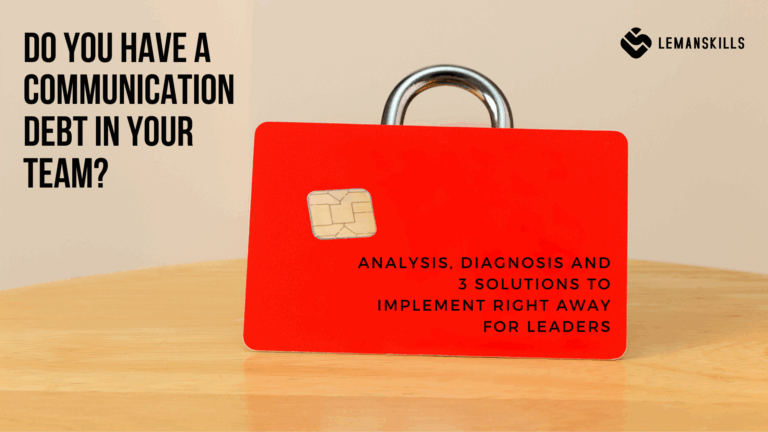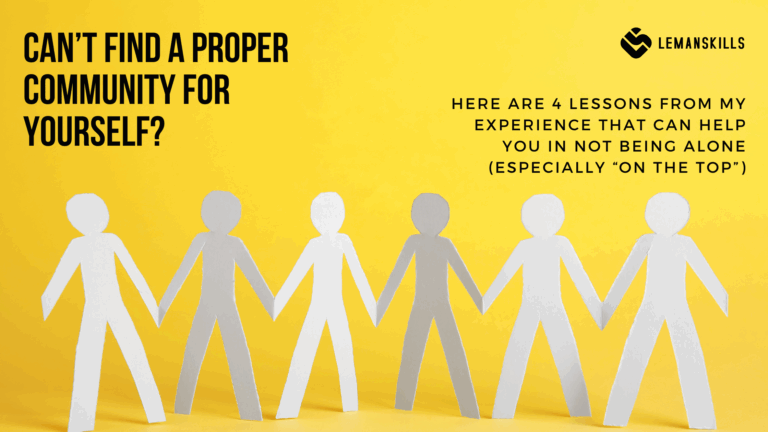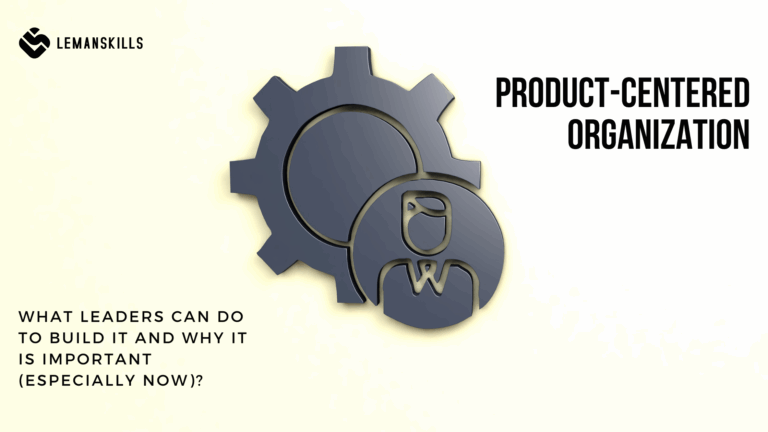Being a leader is a difficult job. If you are a leader and nobody never said that to you, that means the very first offer to cover a leadership position you’ve got was not prepared very well. When we take a manager’s or leader’s job, most of us don’t know what kind of tasks and types of challenge are there, waiting to welcome us on this new journey.
Many leaders on the first stages of this career path are frustrated, shocked, angry, sometimes sad. Basically it’s the whole Kübler-Ross grieving curve: we experience all of those emotions that we feel while grieving or going through any other change (positive or negative) in our life.
That’s mostly because we are not prepared properly to what we are going to face in real life. It’s not only a fancy position name, more money, prestige, power or a better parking spot. What’s more important: the whole palette of people’s needs, emotions, reactions, personality types, communication styles and needs, talents, struggles and many, many more.
Today we are going to cover 5 of the most common types of challenge that you can face as a leader and we’ll try to give you some answers in terms of what you can do to either overcome it, or to deal with every challenge in the best possible way.
1. Lack of motivation / engagement
When do you know that your employee has a low level of internal motivation? What kind of behaviors are telling you that a certain person is not engaged?
Usually you can see a decrease in efficiency and effectiveness, lower mood, an easiness to get into distress, higher possibility to get frustrated, irritated or just tired more frequently than in the past. You can observe that the employee doesn’t care about other people, sometimes saying not very flattering things about their or other teams, or even the whole organization. You can also tell that this person is never happy: whatever you do, they always find something that is not perfect enough for them.
Sounds familiar? Those behaviors are one of the hardest things to deal with, since no one wants energy vampires to be in their lives, not to mention those people who can directly influence their work effects. And it’s super easy to go into this rabbit hole with your employee: to support them, to show them that you care and at the end of the day, just sit in the corner and whine with them. But after a while we just don’t want to create any more new solutions if an employee is not eager to change their way of working or behaving.

Pretty often managers are not familiar with the real reasons why their employees are not motivated or engaged as they “should”. They don’t dig deeper into the subject, don’t ask questions and are not curious about the answer. They assume that it’s about money or a burnout connected with being in one work place for too long. And in 80% of the cases it’s not true.
What you can do as a manager is to get to know what is the real reason of being in this state of mind. Maybe it’s something personal, troubles at home or with their health? Maybe it’s lack of growth opportunities, learning, challenge or mentoring and not a money thing? Maybe it’s about the mismatch of the position that this person has at the moment with their talents, skills and plans for the future? The possibilities are endless, but we need to get to the truth to act accordingly. If you don’t have the real reason, you can’t tailor the solution with an employee to respond to it in a good way. So it becomes a challenge that you can’t overcome.
2. Weak communication / not answering the questions
I guess most of us had more than one situation in our life when you ask a question and don’t get the response we aimed for (or there is no response at all). For example, you ask your employee what can you do to support their career development. And you get the response “I don’t know” or “nothing”. Or when you see that your significant other has a bad mood and you ask “what is it?” and they say “nothing”, when it’s clearly something going on.
Weak communication can mean something different for each of us: sometimes it’s a complete lack of communication (i.e. a person doesn’t speak or answer a question), sometimes a person is not clear, or not responding directly. In other cases people can be triggered somehow and respond goes from the emotional side of themselves, i.e. from anger or sadness: not necessarily adequately to the situation. For some people a problem itself is the way people communicate, because it’s really far from how they talk with others.
What can manager do to improve this area? PCM can be a good start: it will give you a lot of answers to the questions about why people react in a certain way in the communication-related situation (so let’s face it: 90% of the professional cases we face every day). When you have information about the way you communicate and how your people communicate it’s easier to understand, analyze and improve the way every side communicates in each situation.
The second thing can be checking the needs (hungers): does your employee has any frustrations in this area? Maybe they are a high structure need and there is a mess in the organization? It can be a source of this lack of communication (if I don’t have my structure, I’m not taking with others until I have what I need). You can take a look on this space and act on it to reduce the frustration: it can be a game-changer for you and for your employees.
3. Personal / professional development aversion
Did you ever experience a situation with an employee when you started to ask questions about their growth or the next steps in their personal development they want to take, and they said that they are not interested in it? Or maybe you started to encourage them to take more actions to get better as experts on their positions and they didn’t do anything? Or maybe you bought a lot of different books, offered e-learning platforms or individual approach to growth and people barely used anything?
It can be really frustrating when you believe that the growth is an important part of every person’s story and you have the best intentions to support them in their journey. And when there is no or really little of interest on the other side? You can lose your enthusiasm and momentum if you have only resistance or lack of their internal motivation to get better.
The question is why a certain employee doesn’t want to develop. They don’t know what to do next? They stuck and don’t want to admit that they struggle with the next steps? Maybe they have a lot of things that are going on in their private lives, so the personal development is not their priority right now? The key is to get to know what it is about: after having this piece of information, you can be more accurate while talking about Learning & Development area with your employee. And once you have it, you can decide if you can handle the situation on your own or maybe use some external support, i.e. a HR or L&D person that can jump in and deliver some career coaching help to address the employee’s needs the best possible way.
4. Low efficiency / effectiveness level
How is it possible that you run the recruitment process, you choose a person who seems right for the job, they start working and after a while they don’t deliver the work that you both agreed on? Or you have an extremely efficient employee: great work, high quality; and all of the sudden something happens and they stop being as amazing as before. You are confused, since you don’t understand why this person behave like that.
Sometimes even the most efficient and effective people have moments of lower energy, they lose their momentum or high level of internal motivation. They key thing here is to understand what’s happening: to not assume or go into the “they-do-it-to-me” path. Ask right questions, be curious about the other person. About their truth. I know that it’s hard to not assume things: it’s harder for our brain to not do those shortcuts, but actually dig deeper and look for the real answer.
Maybe a person has some personal issues that influence their level of energy, mental or physical state (i.e. having a baby, new pet or moving into another city can be a huge life shift that disturbs a person for a while)?
Maybe it’s about their basic psychological needs that are connected to 6 PCM personality types that are not covered and it brings the frustration or stress?
Maybe it’s about their place in the organization and the fact that they are bored and need a change, since they’ve lost any challenge they can face a long time ago?
The answers can be different as we all are unique individuals, having our own needs, doubts, experiences and reasons why not doing certain things. Before you act, get to know in response to what you are going to take an action. Bad-targeted action sometimes can do more harm than good and make things worse that they were before you talked. Be smart about it, pretty often it’s just asking 1-2 questions and you are ready to be accurate with your support.
5. Not listening to the feedback
Did you ever have a situation when you provided somebody a feedback that you thought was constructive, well-prepared and thoughtful and the other person acted like you slapped them in the face or sometimes worse: they act like you never talked? Or they were making the same mistake over and over again or were behaving in a way that you don’t approve or doesn’t have very good influence on others? It’s quite a challenge for a manager.
Sometimes our employees seem to not listen to the feedback that we provide: especially when it’s a constructive feedback that should change a certain way of working or a behavior. Even when the communication is well-designed, sometimes even rehearsed before the meeting it can be not as efficient as we want.
Why? Most of the times the communication channel is not right or the basic psychological needs of a certain type of personality are not covered. That’s why our employee is not in contact with themselves and the reality that is around them. And in a consequence they don’t hear properly what we say to them, not to mention they act on it.
Persister needs to be asked “What is your opinion on it?” (question about the value/opinion), while Thinker wants to be asked “What do you think?” (question about the logical process). Slight difference, but crucial to have a certain person on board, not to have a challenge dealing with them.
Promoter and Imaginer needs to be addressed in a more autocratic way: just say what you need them to do, in a good intention and action planning to Promoter or some space for the reflection for Imaginer.
Harmonizer needs to be nurtured, by using recognition signs or giving the space of comfort and trust. While Rebel needs feel in contact, the emotive channel is here to use. They need to feel that we are on their side, create the story of their work in this organization together.
While we ask questions to Promoter or Imaginer for example, there is a great chance that we don’t get any answer, especially when they are under pressure. It can be frustrated for us as managers and after a few of those situations we can quit giving feedback at all.
And it’s not about you, it’s not about them: it’s about the conscious and tailored way of communication.
All of those 5 elements are connected with focusing more on other person, than on ourselves. That’s what makes a decent leader a great one: even when experiencing a challenge after challenge.




